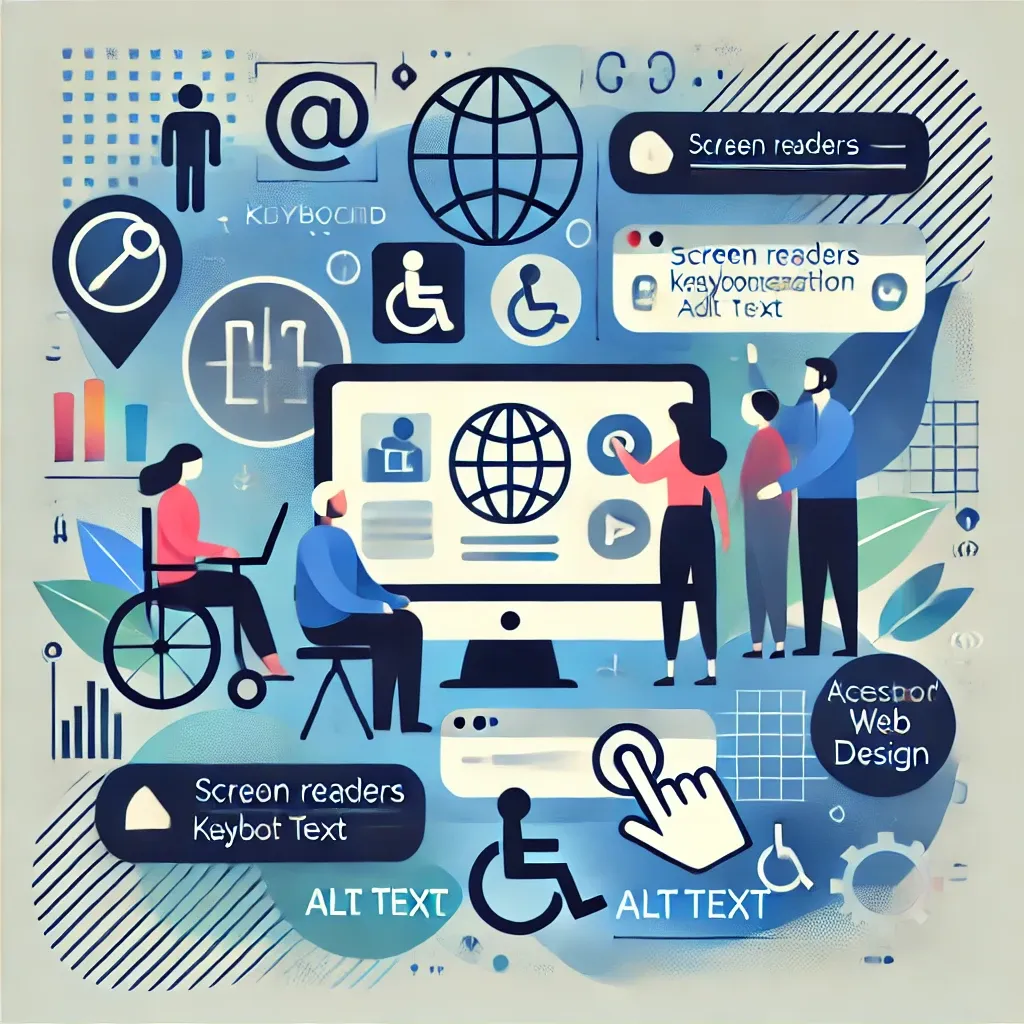
Introduction
Web accessibility is a vital aspect of web development that ensures all users, including those with disabilities, can access and use websites effectively. As we move into 2024, prioritizing accessibility is not only a legal obligation for many organizations but also a best practice that enhances user experience. This guide provides essential practices for creating inclusive web applications.
1. Understand Accessibility Standards
Familiarize yourself with the Web Content Accessibility Guidelines (WCAG) and the Americans with Disabilities Act (ADA) requirements. These guidelines offer a framework for making web content more accessible.
2. Use Semantic HTML
Leveraging semantic HTML elements, such as <header>, <nav>, <article>, and <footer>, enhances accessibility. Screen readers can better interpret the structure of your content, improving navigation for users with visual impairments.
3. Provide Text Alternatives
Ensure that all non-text content, such as images and videos, includes descriptive alt text. This practice allows screen readers to convey information effectively to users who cannot see the visuals.
4. Keyboard Navigation
Design your web applications to be fully navigable using a keyboard. Ensure that all interactive elements, such as buttons and links, are accessible without a mouse, catering to users with motor disabilities.
5. Color Contrast and Text Size
Maintain sufficient color contrast between text and background to enhance readability. Additionally, use relative units like em or rem for font sizes, allowing users to adjust text size according to their preferences.
6. Responsive Design
Adopt a responsive design approach to ensure your website functions well on all devices. A mobile-friendly layout enhances accessibility for users who rely on smartphones and tablets.
7. Skip Links
Implement skip links that allow users to bypass repetitive navigation and jump directly to the main content. This feature improves the browsing experience for users using assistive technologies.
8. Form Accessibility
Ensure all forms are accessible by labeling inputs clearly and providing error messages that describe what needs to be corrected. Use appropriate HTML attributes, such as aria-required and aria-invalid, to enhance screen reader compatibility.
9. Test for Accessibility
Regularly test your web applications for accessibility using tools like WAVE, Axe, or Lighthouse. Manual testing with real users, including those with disabilities, is also invaluable for identifying potential issues.
10. Continuous Learning and Improvement
Accessibility is an ongoing process. Stay informed about new techniques, tools, and guidelines. Participate in workshops, webinars, and communities focused on web accessibility to continuously improve your skills.
Conclusion
Prioritizing web accessibility is essential for creating inclusive web applications in 2024. By implementing these practices, developers can ensure that their sites are usable by everyone, regardless of their abilities, ultimately enhancing user experience and compliance.







0 Comments